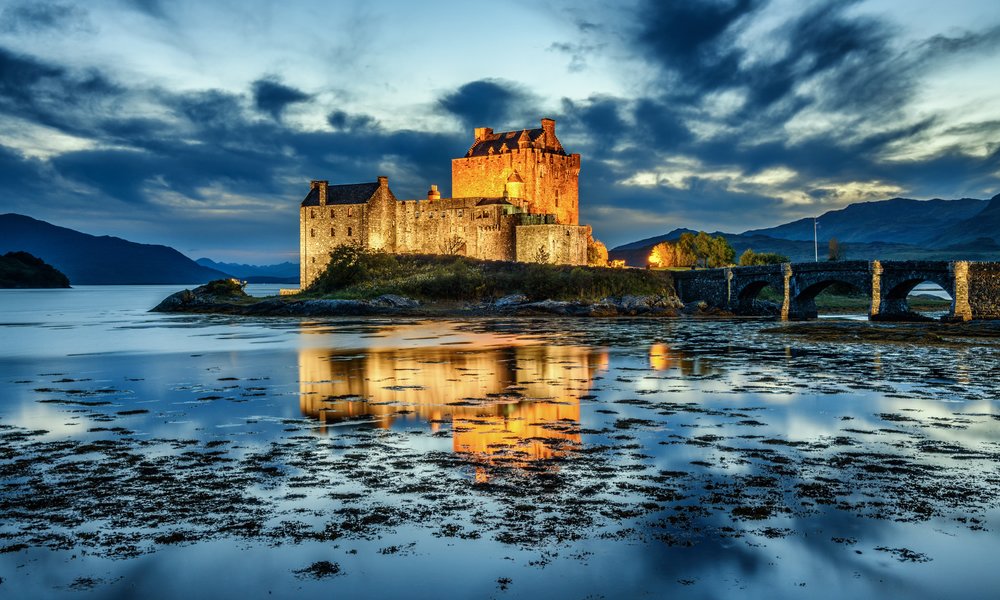Eilean Donan Castle
Of all Scotland’s castles, Eilean Donan has arguably the most magnificent location. It occupies a small tidal island in Loch Duich, and is overlooked by the spectacular Kintail hills within the Kintail National Scenic Area.
The island is named after Donnan of Eigg, a 7th century Celtic saint who may have built a church there. It has been occupied since the mid-13th century. During the next 500 years several versions of the castle were built and rebuilt, in attempts to protect the lands of Kintail. For most of this time it was the stronghold of Clan Mackenzie (led by the Earl of Seaforth and later the Earl of Cromartie) and their allies Clan Macrae, some of whom served as constables of the castle.
Clan feuds raged and were later settled, then towards the end of the 17th century came the Jacobite uprisings. In 1719 the Mackenzies supported the Jacobite cause to restore the Stuarts to the throne. However government forces were vastly superior and the castle was more or less destroyed by cannon-fire.
The castle lay in ruins for nearly two centuries until 1912 when it was bought by Lieutenant-Colonel John Macrae-Gilstrap. A British army officer, he was a prominent member of the Conchra branch of Clan Macrae. At first he was content to preserve the castle as it was, but later decided on restoration; work began in 1920 and was completed in 1932. This included a footbridge to provide easy access from the mainland.
Macrae-Gilstrap died at Eilean Donan in 1937 and is buried nearby. The greater part of the castle was opened to visitors in 1955. It is still owned by the Macraes of Conchra.
Eilean Donan Castle
Dornie
Kyle of Lochalsh
IV40 8DX
www.EileanDonanCastle.com
Open year round with seasonal variation. Closed Christmas Eve, Christmas Day & Boxing Day
Private tours that visit this location:

